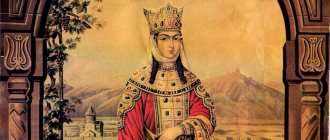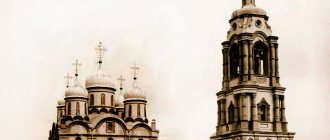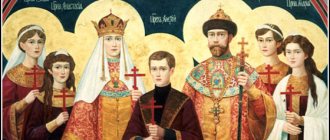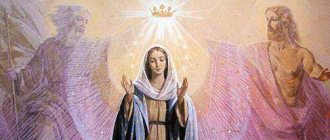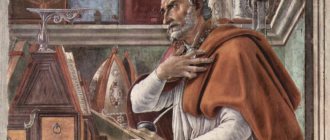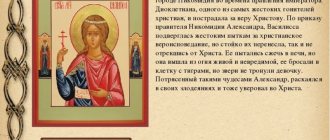From time immemorial, the most revered Georgian saint is considered to be the icon of St. Tamara - she adorns more than one Georgian temple. This queen managed to do an indescribable amount of good deeds for her own people and is a great example of Christian asceticism in the world.
Wise and fair, she always cared for those who suffered hardships and suffering, thanks to which she earned fame among the people. Also, thanks to her ability to govern the country, Saint Tamara was able to protect Georgia from Islamic influence. It was the period of her reign that is often called the golden age of Georgia.
Life of Saint Tamara
The queen's family goes back to the noble king David. Her earthly journey was relatively short, 1165-1213 years. It would seem that such a short time, but this ascetic was able to accomplish so many good deeds.
Until now, Georgians consider the period of her reign to be the best time in the country. Although Tamara herself can hardly be called the darling of fate, and she never bathed in luxury. On the contrary, she avoided it.
Her first husband was the son of Andrei Bogolyubsky named Georgy, a drunkard and a slave of all sorts of passions, with whom the queen had to break off relations. She could have remained a widow with a living husband, but the country needed an heir and it was decided to take a second husband, who now turned out to be David, the Ossetian prince. The next marriage turned out to be more productive, not only in the sense of the appearance of an heir, but also in the sense of much better relationships.
Of the main reforms and achievements of Queen Tamara, it should be noted:
- exemption of the church from taxation;
- easing agricultural taxes;
- active support for widows, orphans and the disadvantaged;
- changing military commanders to more reliable ones;
- repelled the troops of two invaders, Caliph Abu Bakr and Sultan Rukn ad-Din;
- created a common council of church worship in the country;
- erected a considerable number of churches and monasteries.
In general, the country experienced development in all areas, from grandiose military achievements (not only the borders were strengthened, but many new cities were taken) to the development of culture.
The queen’s spiritual asceticism, as evidenced by biographers, deserves attention. During the day, dressed in luxurious clothes, she ruled the country and had access to a wide variety of wealth, even subjugating nearby countries. Nevertheless, at night the queen dressed in simple clothes and stood in prayer in order to gain true riches - spiritual ones. It was such high wisdom and pious behavior that allowed the queen to achieve prosperity and with this allow her own country to prosper.
History of government
George died in 1184, leaving his daughter not only the state, but also strained relations with the local clergy. That same year, Queen Tamara was re-crowned in Gelati, after which she began to eliminate troubles in the church environment and restore administrative order. By her command, churches were freed from duties, and unworthy bishops were removed from the see.
During approximately 30 years of her reign, Queen Tamara did as much as no previous ruler of Georgia could do:
- completed the work begun by her ancestors - created a perfect Georgian army;
- conquered Erzurum and Temriz;
- defeated the Sultan of Ardabil;
- emerged victorious in the Battle of Shamkor, defeating the Aleppo Sultan Nucardin;
- contributed to the development of romantic literature in prose and the improvement of the Georgian language;
- spread citizenship and Christianity among the Caucasian highlanders.
Thanks to the spoils of war and tribute collected from conquered territories, Georgia became one of the richest countries in the medieval world. With the funds received, Queen Tamara built many temples, castles, and defensive structures.
The queen understood that to continue her endeavors, Georgian subjects needed a good education, so she made every effort to expand the school curriculum. Children were taught theology, arithmetic, astrology, foreign languages and many other subjects that were not taught in other countries.
During Tamara's reign, the best musicians, writers, philosophers and poets gathered at the court. It was during her reign that the poem “The Knight in the Skin of a Tiger” appeared, in which Shota Rustaveli sang such human qualities as military valor, courage, generosity and friendliness.
As for Tamara’s personal life, she got married for the first time in 1185. Her political rather than spiritual choice was Prince Novgorod - Yuri Andreevich Bogolyubsky, who turned out to be a drunkard and a man with many vices. The queen tolerated his unworthy behavior for two years, and in 1187 she sent him into exile and dissolved his marriage. The second husband of the ruler was David Soslani, a prince from Ossetia, who for many years was a reliable ally of Tamara and gave her a son, George IV Lasha.
Are you going to Georgia? Write to [email protected] - we will create the optimal travel route for you. Come and we will try to make your vacation unforgettable! You can get a free consultation by phone: +7 (495) 268-07-72 or +995 555 566 540
What do they pray for in front of the icon of Queen Tamara?
As it is not difficult to understand, the icon of St. Tamara is especially popular in Georgia. Indeed, Saint Tamara is considered primarily the protector of Georgia, and it is the representatives of this country who venerate the icon in a special way.
However, the saint is also the embodiment of some universal principles, and therefore can guide believers in any country to the true path. Saint Tamara is often asked to intercede with the Lord for:
- abandoning bad habits and destructive passions - Tamara herself knew about the harmfulness of this from her first husband;
- the gift of wisdom and devotion to faith - she embodied these qualities;
- protection of orphans and widows - the queen, being in the mortal world, took care of them, continues to this day;
- healing from illnesses, including significant injuries - many in Georgia consider the icons of Queen Tamara to be healing;
- improving fate, choosing the right path - how a wise saint ruler can guide you on the right path and protect you from adversity.
The meaning of the icon of St. Tamara is that they come to this icon simply for advice and find relief there, as well as some really wise thoughts that help in business. The saint helps all Georgians on the planet, so many representatives of Iberia have this icon with them in order to always be able to turn to Saint Tamara.
Often this image is used as a home talisman. Remember? The queen skillfully guarded the borders of her own country, and none of the uninvited guests could invade there.
Accordingly, Queen Tamara can protect your home. The presence of the icon of St. Tamara allows you to save your living space from a wide variety of external influences.
How to celebrate name days
The day of the angel Tamara or any other patron saint is a holiday that, first of all, should be celebrated with the soul. On this day, the Holy Protectors are remembered so that they too remember us. You should visit the temple, confess and take communion. Offer a prayer to Saint Tamara (or any saint whose day is celebrated).
Of course, you can arrange a feast and invite guests. But the holiday shouldn't be noisy. It is better to celebrate the day of the angel Tamara or another saint in a close circle. It is advisable to avoid noisy companies and loud toasts.
Tamara's Angel Day (name day) does not fall during fasting; you can set the festive table and invite guests. The meal can be generous and varied. This is not prohibited by church laws. But it is more important and useful for Tamara herself to devote the day of the angel to visiting the temple and spiritual joys.
Hatshepsut (c. 1489-1468 BC)
Hatshepsut undoubtedly had both will and strong character. With a living male heir, she managed to seize the throne, declared herself pharaoh, took the name Maatkar and the priests crowned her as a man. During ceremonies, she often wore an artificial beard in order to completely resemble a male pharaoh. Both “male” and “female” images of Queen Hatshepsut have been preserved.
Photos from open sources
Hatshepsut. Women's and men's options
How this masquerade was perceived by the nobles and the people is unclear, but Hatshepsut achieved absolute power, which many male pharaohs did not have, and became the greatest female ruler in the history of Ancient Egypt.
Her reign became the Golden Age for Egypt. Agriculture developed, the queen distributed free land to peasants and issued loans for the purchase of slaves. Abandoned cities were restored. Organized a research expedition to the country of Punt (present-day Somalia).
Photos from open sources
Hatshepsut. Female Pharaoh
Conducted several successful military campaigns, led one campaign (to Nubia) herself, i.e. She also proved herself to be a military leader. Built on her orders, the mortuary temple of Queen Pharaoh Hatshepsut is the pearl of Egypt, along with the pyramids, and is under the protection of UNESCO.
Unlike other queens, Hatshepsut was able to create a mechanism of succession and after her death the title and throne were safely accepted by Thutmose III. This time Egypt did without cataclysms, which once again proves that Hatshepsut had statesmanship.
How did Tamara's reign begin?
Information about Tamara's early life is rather scarce, since only two credible sources have survived. The future queen was born in 1166. George III erected the Nativity Church in honor of his daughter. Now it exists under a different name - Our Lady of Didube. Tamara's mother is known for her noble origin. Burdukhan - under this name she went down in history - was the daughter of an Alan king. Tamara's mother did not participate in raising her daughter. They were separated by the early death of Burdukhan. The birth of Tamara was preceded by fateful events for Georgia, in which people close to her participated:
- George III is known as a warlike monarch who was engaged in expanding the borders of his state;
- he came to power after the death of David, the king who inherited the throne from Dmitry Bagration, his father;
- Demna, the young son of David, was to ascend the throne;
- in fact, the country was ruled by George III, Demna’s guardian;
- the young legitimate heir considered the situation unfair and dreamed of the throne;
- 1177 was marked by an uprising; the rebellion was led by Demna and his father-in-law, I. Orbeli, who at that time was the commander-in-chief;
- they were supported by feudal lords dissatisfied with George III;
- help from abroad, on which the rebels had pinned their hopes, did not come;
- George was not slow to take advantage of the confusion in the enemy camp and attacked his enemies;
- Demna and his father-in-law were executed.
There is no reliable information about these dramatic events.
Therefore, historians cannot state the outcome of the uprising with absolute accuracy. Tamara, left without a mother at an early age, was raised by Rusudan, a mentor about whom there are legends as an unusually intelligent woman. The great influence that Rusudan had on the future queen is considered an indisputable fact. Thanks to her mentor, Tamara was highly educated, well-read and analytical.
George III found himself in a difficult situation. There are no heirs to the throne left. To maintain power and stabilize the situation, he crowned the minor Tamara (then she was 12–14 years old, according to sources), remaining the reigning monarch. An important event for Georgia - the coronation of a new queen - took place in 1178 in Uplistsikhe. The joint reign continued until 1184, when Tamara was re-coronated at the Gelati monastery.
After this, the queen removed the rulers who abused power and removed unworthy bishops from the throne. The duties imposed on the churches were decisively abolished. During the initial period of Tamara's reign, she had significant disagreements with selfish representatives of the church. Mikael, the new Catholicos, demanded the position of vizier for himself and deprived Tamara of the opportunity to make fateful decisions on her own.
A notable contribution of the Georgian queen to lawmaking was the creation of the “Thieves Finders” service in 1178. The goal of the new organization was to reduce the number of thefts and robberies. This good intention was partially realized, which affected the growth of Tamara’s popularity and authority as a political figure of that time.

